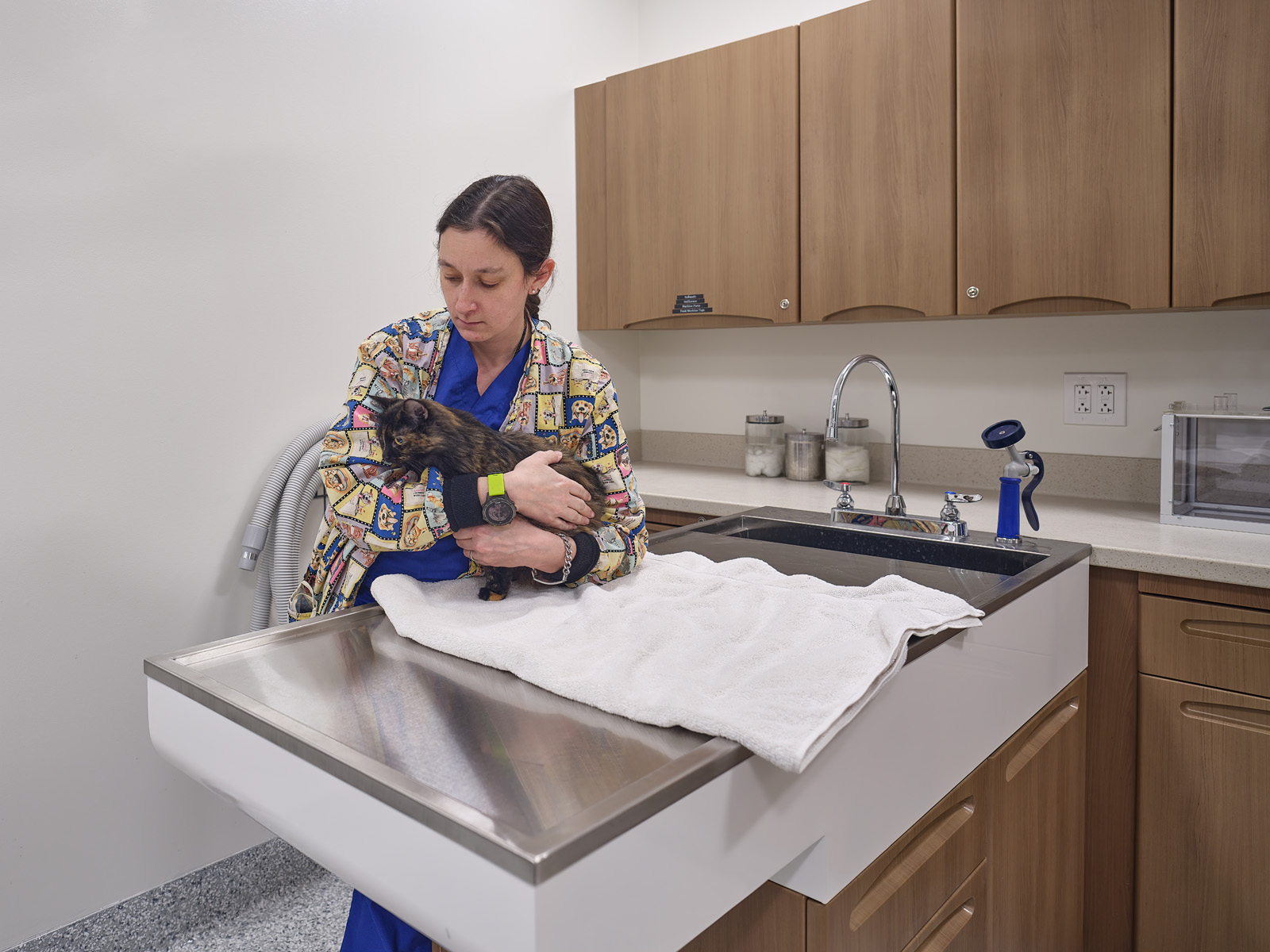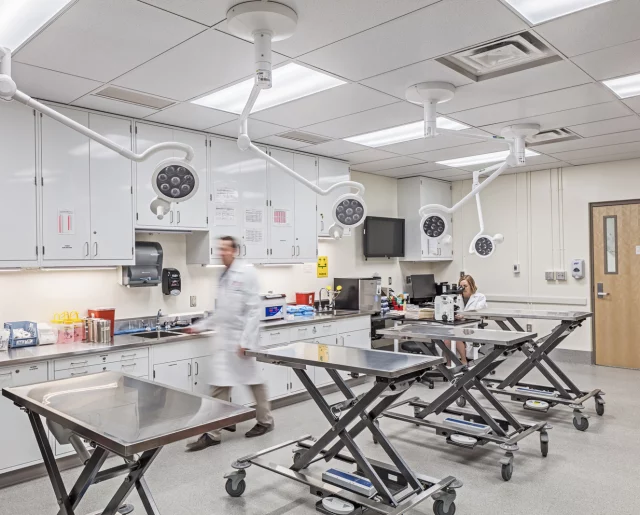The 3 Subtle Design Elements Your Animal Needs, But Can’t Tell You

As designers of the built environment, we pride ourselves on design solutions that are human-centric and ultimately keep the end user in mind. As an advocate for animals and people, it’s paramount that design not only keeps humans at the forefront of design, but also our pets. This looks like designing intentionally to reduce any fear, anxiety or stress in a pet, while also bidding a positive experience for all veterinarians and animal owners involved.
One notable educational tool provided to veterinarians, pet professionals, pet owners and any involved in the animal welfare community, is Fear Free.
Since 2016, “Fear Free has become one of the single most transformative initiatives in the history of companion animal practice, providing unparalleled education on emotional wellbeing, enrichment, and the reduction of fear, anxiety, and stress in pets and improving the experience of every human and pet involved.”
Recently receiving a Fear Free certification has broadened my perspective, and invited new ways to design for animals, veterinarians and owners. Specifically, it is imperative to design and conduct a practice with the Fear Free mindset so that the animals being cared for are less fearful of their new, unknown environment. This in turn, benefits each party involved because research concludes that animals that show fear are significantly harder to treat or diagnose.
Overall, the biggest takeaway from receiving a Fear Free certification is that outside of general user caring, making subtle changes in design can make the biggest difference in calming a patient.
Reflecting on that takeaway, below are the three subtle design elements that your animal needs, but can’t tell you they need.
1- Enter To Calm, Not A Concrete Jungle
Thinking about the touchpoints of a veterinary experience, the first touchpoint in the built environment is the entrance. The entrance sets the tone and has the ability to send messages to an animal’s central nervous system.
The more nature is integrated into the design, the better. The reason being is due to familiarity- think five senses. If a pet can recognize the familiar smell, touch, sight, sound and taste of the natural environment, the more safe it feels.
Overall, the entrance has the opportunity to give the animal a chance to know and become familiar with the surroundings, setting the tone for the rest of the appointment.
For example, this could be the type of surface the pet is walking on, or the type of plants installed in the entrance that reminds or triggers a familiar response to being outside.

2- Pathway To A Successful Appointment
An overlooked, but important design element is the waiting room and a clear, consistent pathway to a reception desk.
This clear path to a check-in and waiting rooms should be private and tucked away from any other pets. According to a recent study conducted by the Green Element, one of the biggest causes of anxieties in dogs and cats is other dogs or cats in near proximity. Specifically, this anxiety holds true in 43.52% of dogs and 54.0% of cats.
This said, it is important to design the built environment in a careful and conscious way to eliminate anxiety producing situations.
Some small but key changes for the waiting / reception area are:
- Have a separate waiting area for cats and dogs.
- Design higher surfaces so cat carriers sit off the ground out of sight of dogs.
- Create smaller waiting zones with visual barriers.
- Separate check-in and check-out areas.
- Use non-slip mats in certain areas like on a scale.

3- Making Exam Rooms Peaceful As Possible
It is safe to say that examination rooms can be stress-inducing not only for humans, but also pets. With this in mind, it is our responsibility as designers to create a peaceful environment for exam rooms.
In my mind, the best way to promote a peaceful environment is to control the sounds a pet is hearing. For example, if a pet is being flooded with sounds of another pet barking in the room next door, this opens up opportunities for anxiety, stress and fear. One way for this to be controlled is through an STC Rating- a score calculated based on the way sound travels through surfaces. The goal being a higher score, meaning less sound penetration. Controlling sound can also look like the activation of calming sounds or music.

Another example of designing for the peace of a pet in an exam room, would be to choose surfaces that promote warmth and are easy to clean. Staying away from tile and hardwood surfaces, and instead using resilient sheet flooring and mats.
Overall, designing a veterinary hospital or facility overlaps with designing a human hospital. The two need to be designed at the same level, and deserve the same type of intentionality. Not every firm agrees, but MA Design prides itself on designing for those that aren’t able to speak for themselves.


